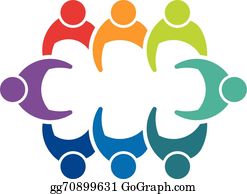Campaigns: Public, Quiet, Silent? What’s the difference?
 In working with non-profits who are in campaign mode, the only thing that causes more angst than whether they will reach their goal is “when to go public.”
In working with non-profits who are in campaign mode, the only thing that causes more angst than whether they will reach their goal is “when to go public.”
“Going public” is a function of both the calendar and the campaign thermometer. And it is different for everyone.
Here are a few observations to consider in planning the public phase of your campaign.
- Your campaign is in the public arena the moment your board approves it. It’s unwise to think otherwise or to try to control the flow of information. Milestones along the way, such as the announcement of major gifts or accomplishments, will gradually nudge it into the public consciousness.
- The quiet/public distinction is mostly an internal one among your board, staff and campaign leaders. There are so many campaigns in process at any one time that your casual observer, even one who regularly supports your organization, really could care less.
- The quiet/public distinction also is largely a function of campaign staff and priorities. It just makes sense to tackle the larger gifts first because: a) your campaign won’t succeed without them; b) they take the longest time to come to fruition and c) they provide the needed momentum to carry a campaign through.
- Unless you have limitless staff resources, the folks managing the leadership phase are also the folks who will be managing the public phase. They can’t do both at once. So the best time for them to devote their energy to securing the $100-$1,000 level gifts is when the $1 million gift potential is pretty much exhausted.
- Ideally you want to be toward the end of the campaign when turning your attention to the “y’all come” portion. It’s just good psychology to ask people to fill the last $500,000 or so of your $10 million bucket with smaller gifts than it is to fill the last $5 million with gifts of that size. It makes their gifts appear larger and their participation more meaningful.
- To sooth the angst of your leaders wondering about when the campaign will go public, it would be wise for staff to spend some time early in the campaign developing a plan for what the public phase will look like (i.e. a major event, direct mail, a phone campaign, etc.) and inform said leaders that this will be implemented when the campaign reaches 90 or 95 percent of its goal. Often, their angst is less about when the public phase will be launched than what it will look like when it is launched.
The public phase is the costliest, least effective (from a pure fundraising) portion of your campaign. It is less about raising dollars than it is building awareness and leveraging the campaign to build excitement and participation and, hopefully, begin nurturing those donors for the next campaign!

